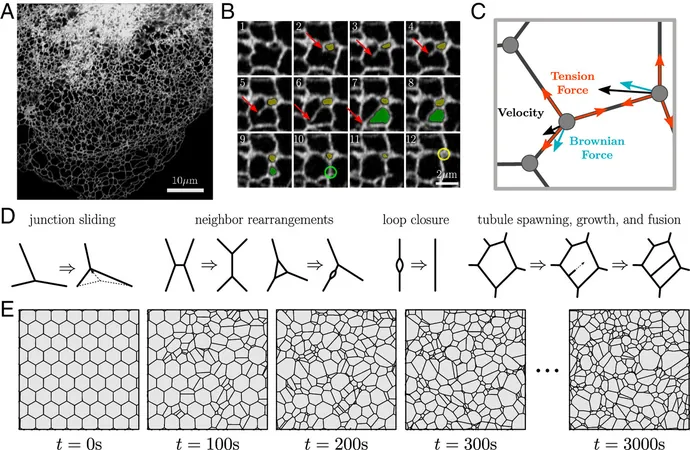
Breakthrough Endoplasmic Reticulum Model Reveals Secrets of Cellular Function and Disease Linkages!
2024-10-30
Author: Sarah
Introduction
A revolutionary study has unveiled the intricate workings of the endoplasmic reticulum (ER), a pivotal organelle that serves as the backbone of protein transport and quality control within cells.
This dynamic network of tubules not only plays a crucial role in cellular signaling and stress responses but also stands as a key player in various neurological disorders when its structure is disrupted.
Research Highlights
Researchers, including notable experts from UC San Diego, have developed a groundbreaking physical model that shows how the ER's unique structure and its dynamic behavior stem from the delicate interplay between tension-driven contraction and the active growth of new tubules.
The findings, published in the prestigious Proceedings of the National Academy of Sciences, provide fresh insights into how the ER maintains its essential functions amid constant cellular turnover.
Active Liquid Network Concept
This discovery introduces the concept of an "active liquid network," illustrating how the ER's cellular-scale architecture emerges from microscopic rearrangements.
Remarkably, the study highlights the ER's ability to sustain a dense, rapidly changing network crucial for its role as the cell's delivery hub for proteins, lipids, and ions—a function vital for maintaining cellular health.
Expert Commentary
Elena Koslover, Associate Professor of Physics at UC San Diego, noted, "The capacity to preserve complex structures despite continuous turnover is a vital characteristic of living cells. Understanding this process is vital to uncovering the fundamental principles governing life itself."
Implications for Disease
Furthermore, this research not only enhances our knowledge of the endoplasmic reticulum's basic functions but also paves the way for exploring its involvement in a variety of diseases.
As scientists continue to delve into the structural anomalies of the ER, they may uncover new therapeutic targets for conditions ranging from neurodegenerative diseases like Alzheimer's to metabolic disorders.
Conclusion
Stay tuned for further developments in this exciting area of cellular biology as researchers continue to unlock the mysteries of the endoplasmic reticulum and its far-reaching implications for human health!


 Brasil (PT)
Brasil (PT)
 Canada (EN)
Canada (EN)
 Chile (ES)
Chile (ES)
 España (ES)
España (ES)
 France (FR)
France (FR)
 Hong Kong (EN)
Hong Kong (EN)
 Italia (IT)
Italia (IT)
 日本 (JA)
日本 (JA)
 Magyarország (HU)
Magyarország (HU)
 Norge (NO)
Norge (NO)
 Polska (PL)
Polska (PL)
 Schweiz (DE)
Schweiz (DE)
 Singapore (EN)
Singapore (EN)
 Sverige (SV)
Sverige (SV)
 Suomi (FI)
Suomi (FI)
 Türkiye (TR)
Türkiye (TR)